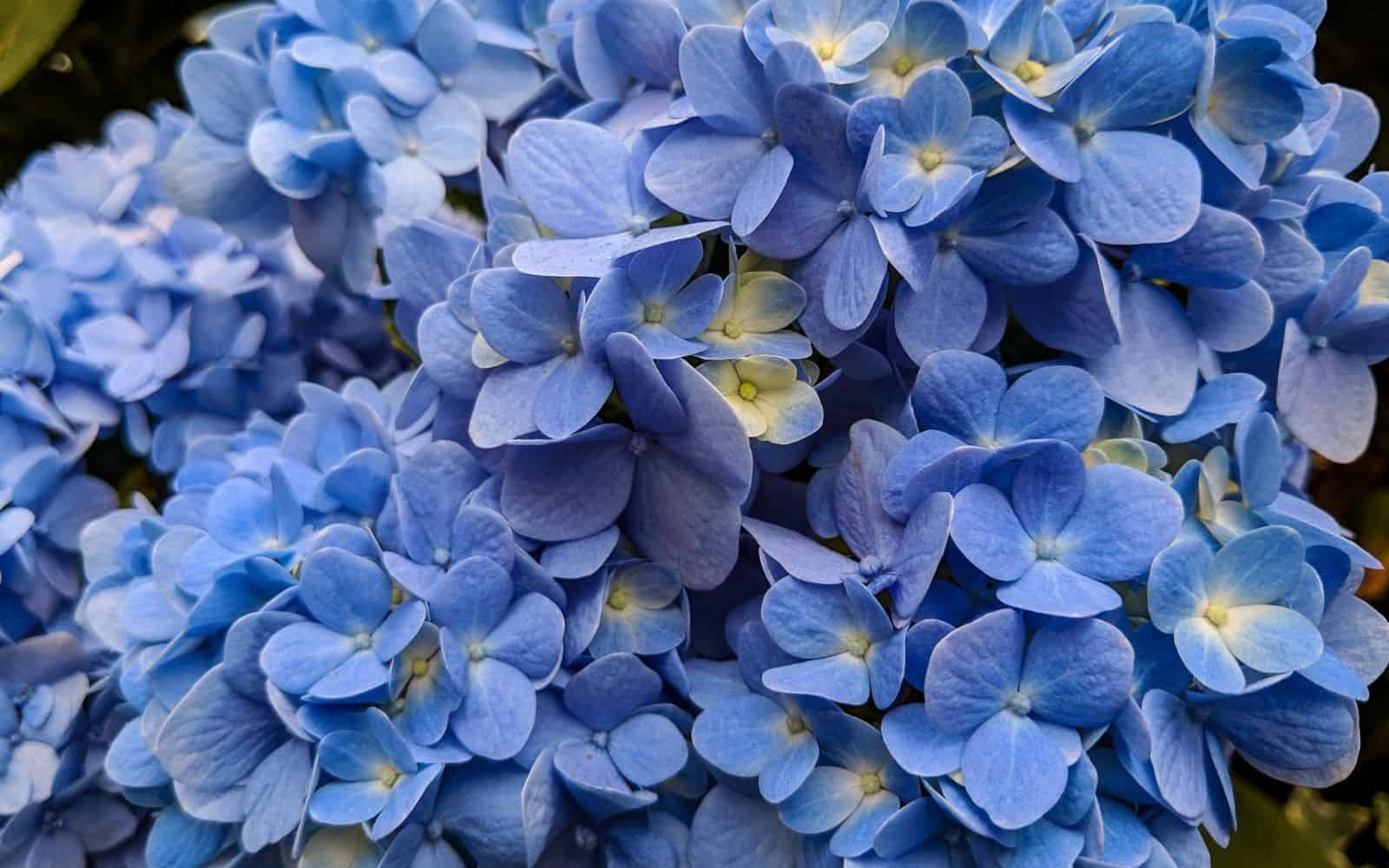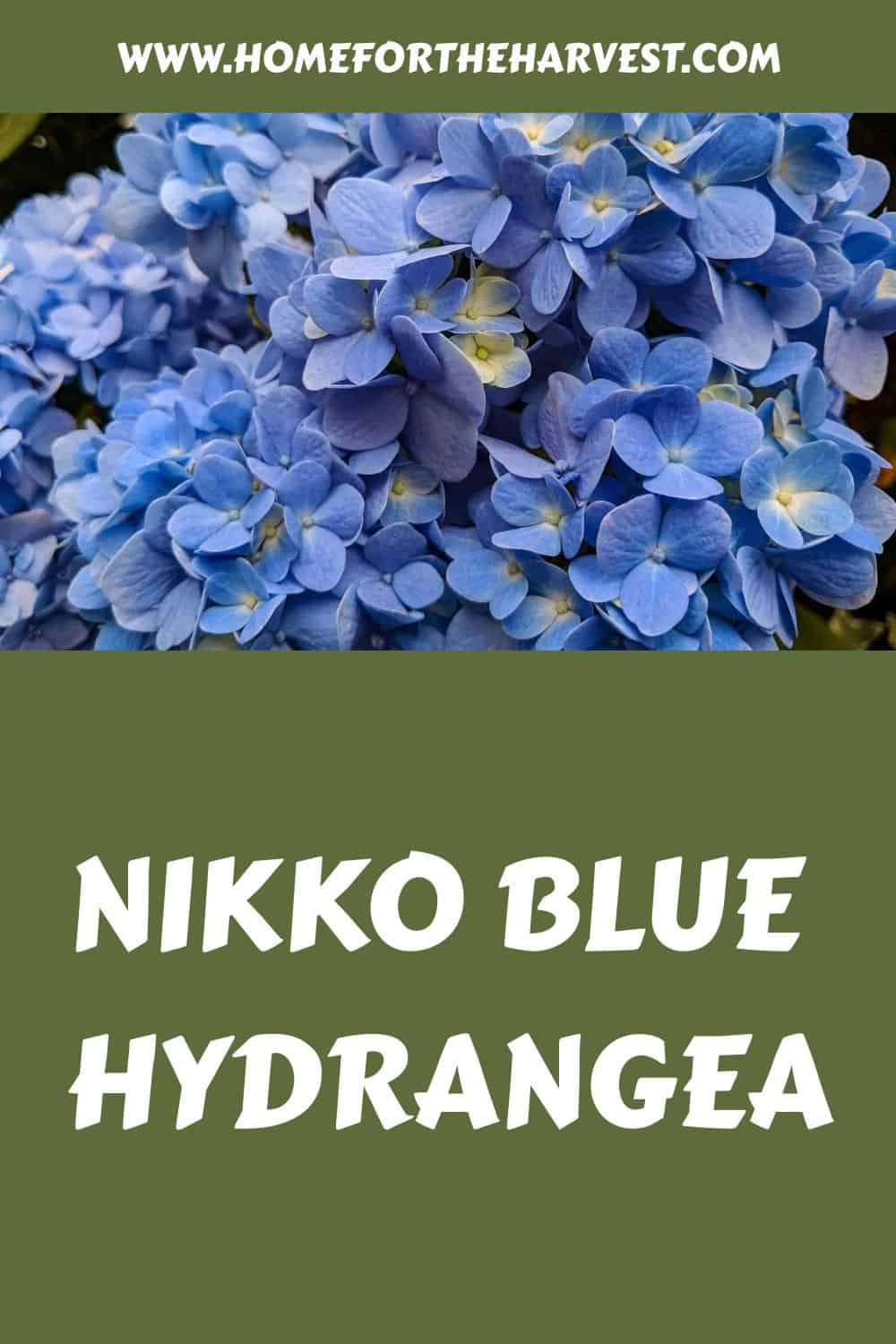Nikko Blue hydrangeas are deciduous flowering shrubs that bloom from early summer into fall. The blossoms are usually blue but can also be purple or pink depending on the alkaline levels in the soil. They are great accent plants and have a longer bloom than many. Nikko Blue is one of the most popular blue hydrangea cultivars available.
Nikko Blue hydrangea basics
The Nikko Blue hydrangea is a cultivar of bigleaf hydrangea (botanical name Hydrangea macrophylla). Native to Japan, they are also known as “mophead” hydrangeas due to their oversized blooms. As the name “bigleaf” implies, the foliage is quite thick and large, so it adds a lot of ornamental greenery to the garden.
Nikko Blue hydrangeas can be grown in Zones 6-9. They can sometimes be grown in cooler Zone 5 with some winter protection. These hydrangea plants are deciduous shrubs that can grow to be 4 to 10 feet tall, and 4 to 10 feet wide, but they are usually at the smaller end of that scale (around 6 feet tall and wide). They are fast-growing when hydrangea growing conditions are good and have large, round flower clusters.
The color of Nikko Blue hydrangea flowers, as you might have guessed, is typically blue. However, this is not always the case. One unique thing about this type of hydrangea is that the color of the blooms can change depending on the type of soil it is planted in.
Most of the time, these hydrangeas will be a rich, sky-blue color. However, when they are planted in soils with higher alkaline soils, the blooms can actually be pink or even purple colors. Here’s a chart showing the color range of this species of hydrangea.
The flower clusters are typically about 5 inches across. They usually bloom in the early summer and remain that way for about two months. These plants are very floriferous and typically produce new flower stems throughout the summer.
“If you have acid soil, Nikko Blue is one of the best hydrangeas about, and even on lime soil and with the flowers in a rosier incarnation, it is pleasant enough.”
Hydrangeas: Beautiful Varieties for Home and Garden Hardcover, by Naomi Slade
Buying Nikko Blue hydrangea plants
Nikko Blue is a fairly common variety and is not a brand name owned by a specific company. Most garden centers should be able to order one in for you if they don’t have it in stock.
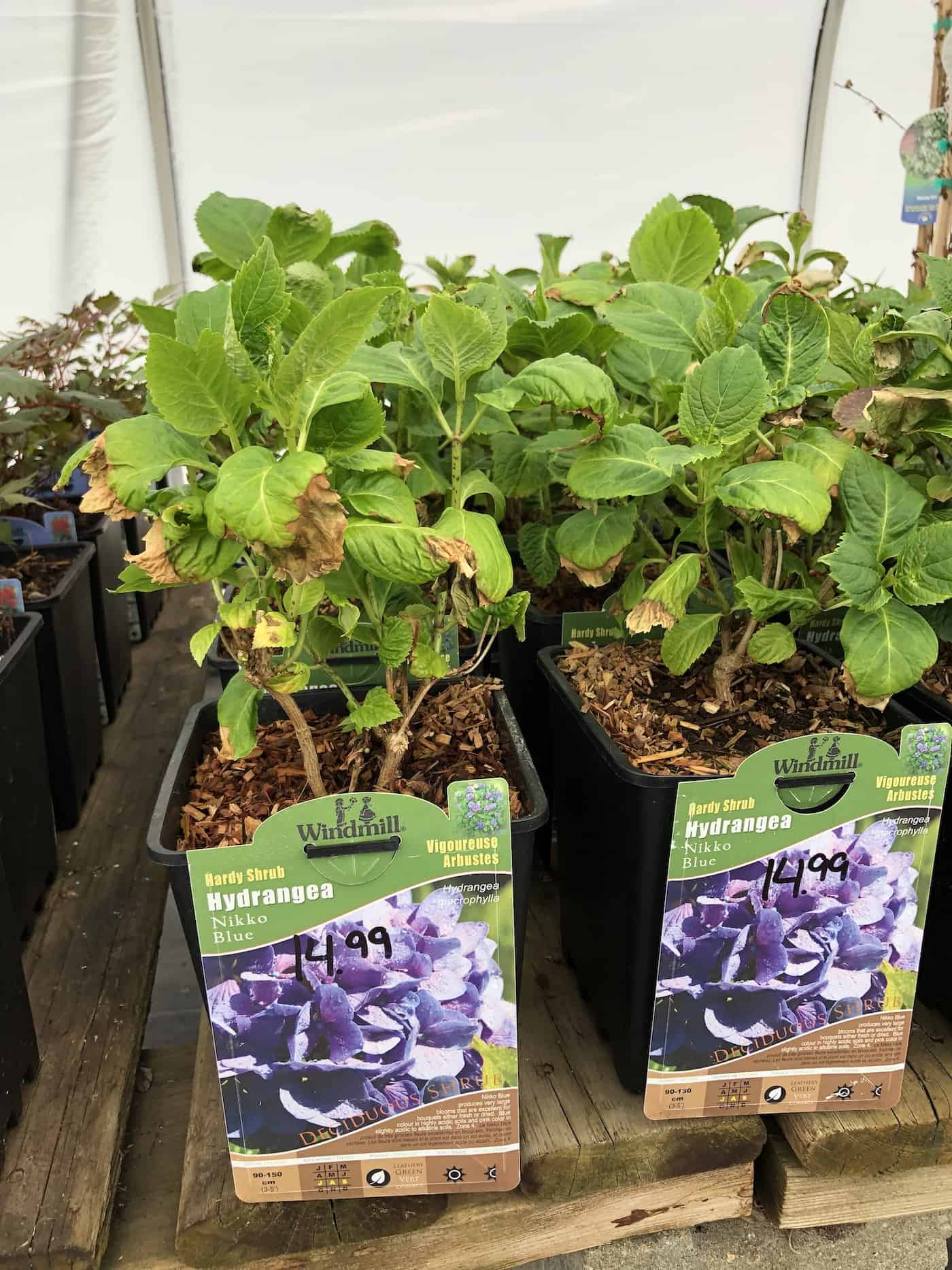
How to plant Nikko Blue hydrangeas
Nikko Blue Hydrangeas should be planted in rich and moist soil, but it should also be well-draining soil. The nice thing about the pH levels controlling the color of the flowers is that you can very easily change that color. If planted in more acidic soils, the bush will bear blue flowers. If the soil is a more alkaline blend, pink or purple blooms are likely to occur. You can test your soil and add certain soil amendments to get the desired flower color.
If you’d like your hydrangeas to flower in a deep true blue, avoid planting them near hardscaping that may leach lime. Limestone and concrete can both leach out lime, raising the pH of the soil nearby. The leaching lime tends to lead to purple-pink flowers over time. Avoid planting blue hydrangeas near concrete or limestone to keep them flowering blue.
These plants grow quickly and typically grow to be around 6 feet tall and wide. Their flowers or blooms are actually called sepals and typically appear in July. They are tough and persist for months.
“Plant Nikko Blue where it can be most appreciated. It works well as an informal hedge along the edge of a lawn, or try siting it under mature trees with companions such as ferns and hostas, or with other plants that have a light or luminous quality such as irises and astilbes.”
Hydrangeas: Beautiful Varieties for Home and Garden Hardcover, by Naomi Slade
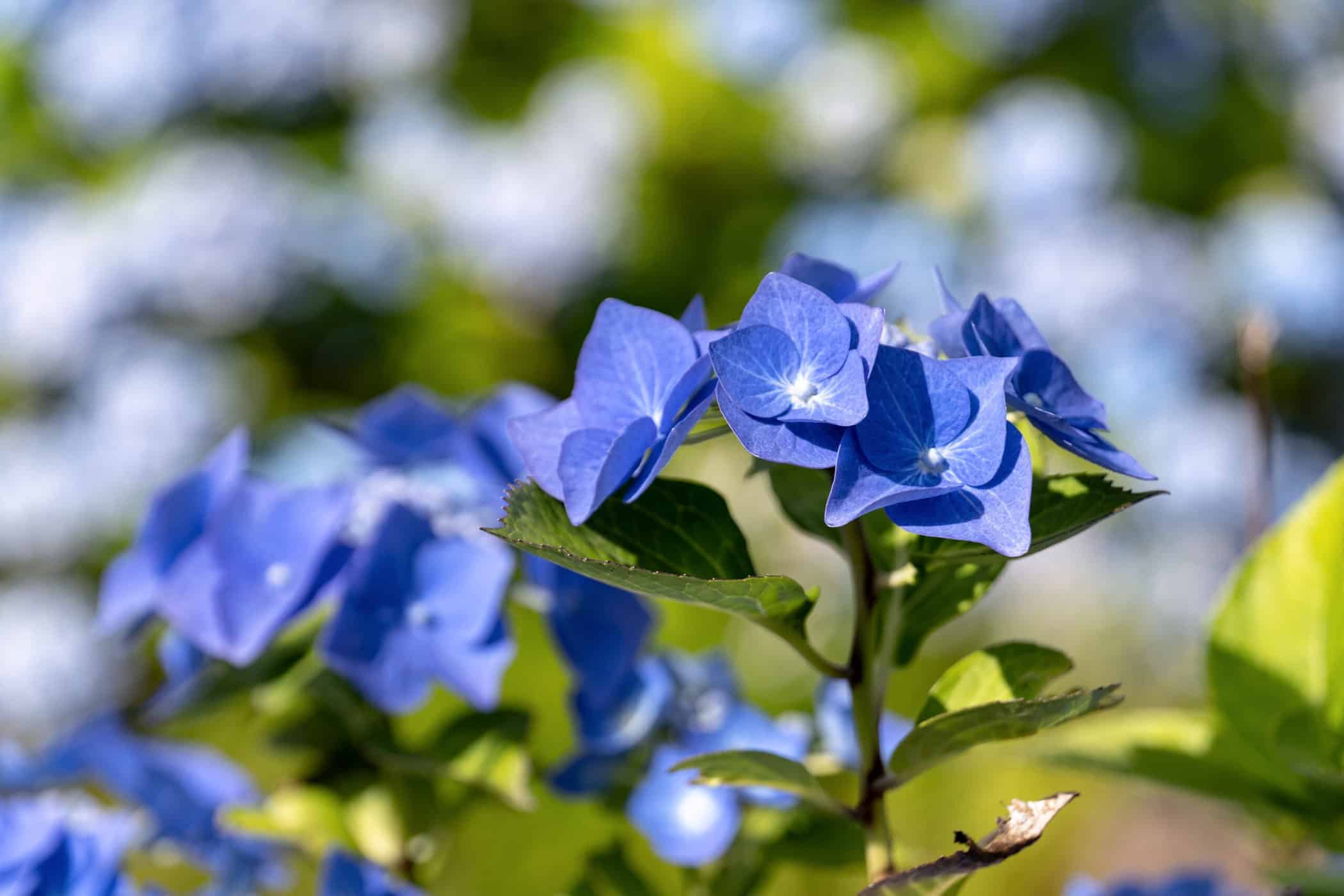
Caring for Nikko Blue hydrangea shrubs
Nikko Blue hydrangeas should be planted and grown in a spot where they have partial shade. This plant appreciates some morning sunlight, though too much sun can cause damage if you don’t keep it well-watered.
You should water new hydrangea plants deeply and do it multiple times a week. This will help it to grow strong roots. In general, you should try to give these plants at least 1 inch of water per week. This should be increased as you experience hotter weather.
When watering these plants, you should make sure to water the base of the plant to avoid getting the flowers and leaves wet. This will help you to keep your plant healthy and strong by avoiding fungal diseases.
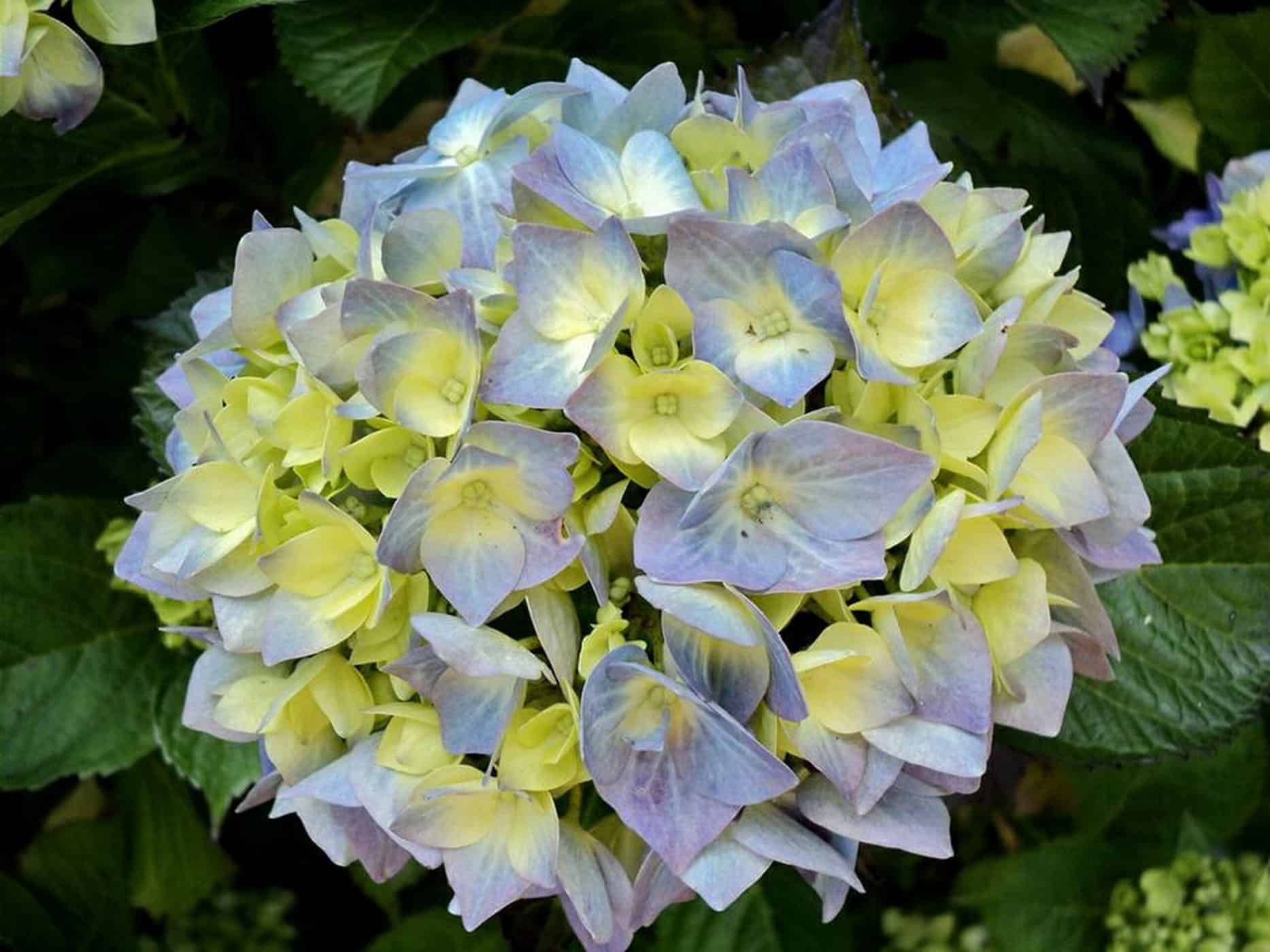
Changing the color of Nikko Blue hydrangea flowers
Nikko Blue is a cultivar of Hydrangea macrophylla, which is the type of hydrangea that can change its blossom color based on the pH of the soil. A soil test will tell you the baseline soil pH so you can decide how to amend the soil (and change the flower color).
Soil acidifiers can be used to turn Nikko Blue hydrangea flowers into a rich blue color. Acidifiers like sulfur and gypsum lower the pH of soils to produce blue blooms. Soil acidifiers are typically applied every few months until the desired soil pH (4.5-5.0 for blue) is reached. Some hydrangea fertilizers contain added sulfur to help keep flowers blue on an ongoing basis.
Garden lime can be used to turn Nikko Blue hydrangea flowers more of a purple/pink color. Alkaline soil amendments like dolomite lime raise the pH of acidic soils to bring them to a more neutral level. Garden lime is typically applied in early spring and/or early fall until the desired pH toward neutral is reached.
Fertilizing Nikko Blue hydrangea plants
Nikko Blue hydrangea plants can benefit from an annual application of well-balanced, slow-release organic fertilizer. Use a product formulated for flowering shrubs if possible, and note any pH targets you may have (see above). Nikko Blue plants are typically fertilized in early spring as they come out of winter dormancy.
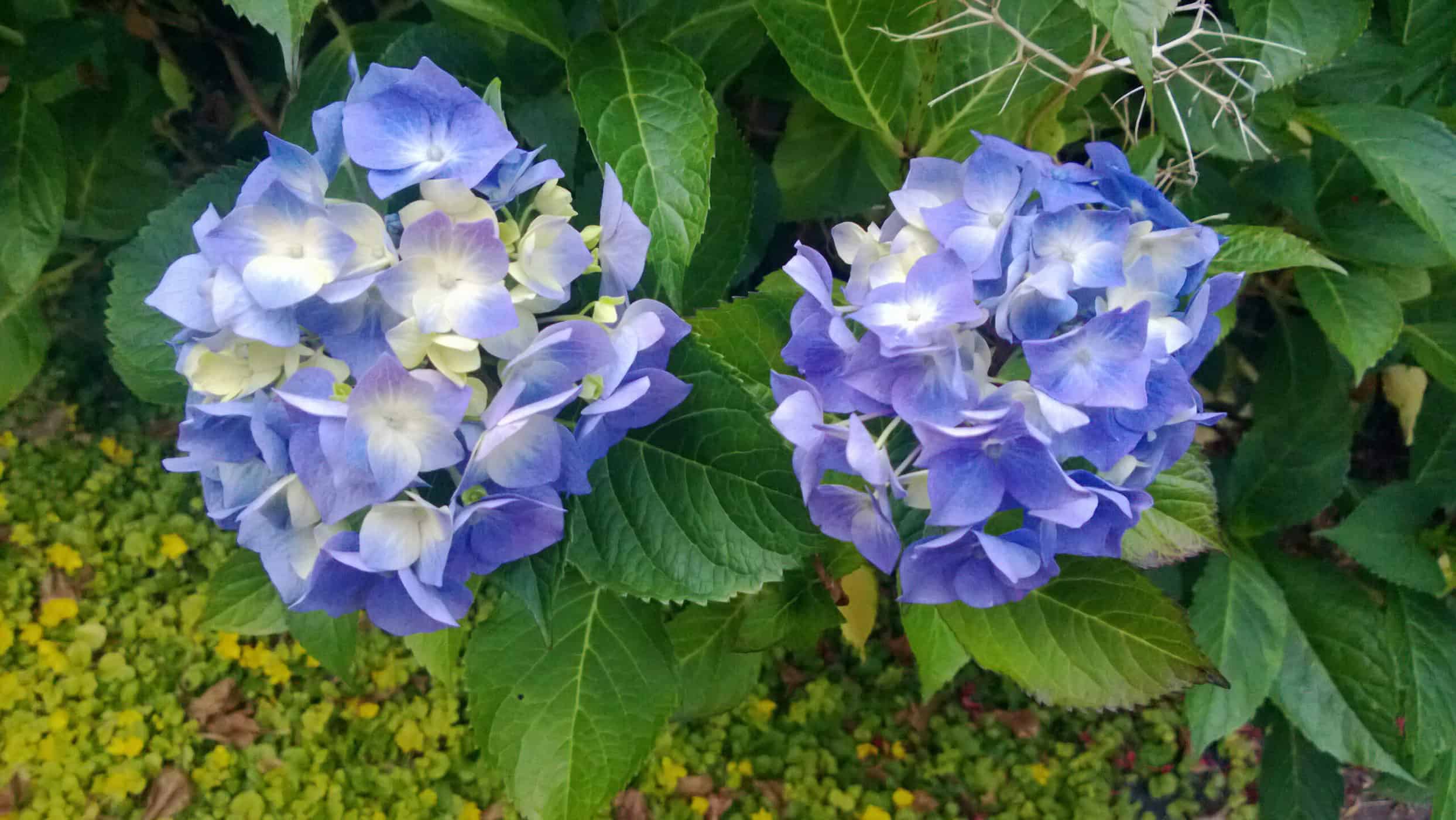
Climate requirements for Nikko Blue hydrangeas
This type of hydrangea grows best in Zones 6 to 9, which covers many parts of the United States. These plants are native to Japan, but can, of course, be grown in other locations as well. Nikko Blue is not a good choice for colder areas, which would be better suited to a variety like Bloomstruck.
Mature hydrangeas can withstand temperatures as low as 32 degrees Fahrenheit. Younger plants, however, should not be kept at temperatures lower than 35 to 40 degrees Fahrenheit. In general, hydrangeas prefer average to high levels of humidity. They will typically thrive in the moist heat of summer.
If they are in a desert climate and are exposed to too much dry air, the leaves of the plant can wilt or droop. You can compensate for this by making sure the plant stays well-watered and has access to shady areas. This type of shrub prefers a shady to a partial shade location. It will grow best in these spots. Full sun can be tolerated by this plant as long as constant moisture or water is provided.

Pruning Nikko Blue hydrangeas
Nikko Blue Hydrangea shrubs do not require much pruning, if any. If you do feel the need to prune them, it’s important to know that these plants bloom on old wood. This means that this type of shrub blooms on the previous year’s growth. This also means that the right time to prune this plant would be in the summer, immediately after it finishes blooming.
These plants can be pruned after flowering, and this can be done by cutting back the stems to a pair of healthy buds. You can also use the early spring as an opportunity to prune out weak or damaged stems.
Buds are usually set in late summer to early fall, so you need to prune before this if you don’t want to risk losing any flowers for the next year. If you prune after the buds have been set, that is what can happen. If there are any dead branches, those can be pruned out at any time. These branches should be pruned back to where you see healthy buds growing.
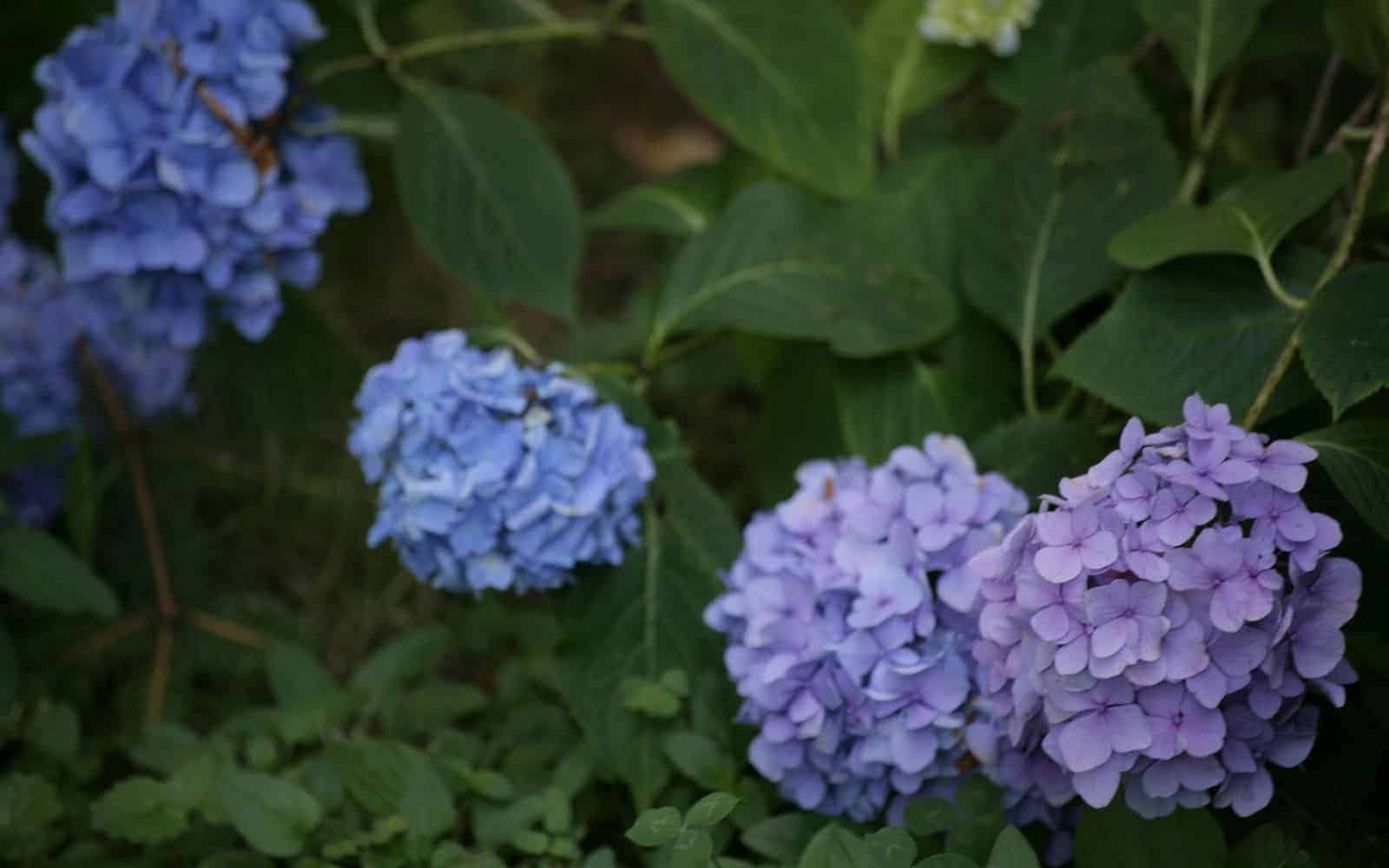
Common pests that attack Nikko Blue hydrangea
Nikko Blue Hydrangeas can be attractive to pests, including aphids, spider mites, slugs, and Japanese beetles. Fortunately, recognizing them is fairly straightforward. These pests are all possible to conquer if you have the right tools.
Start by washing off the entire plant with a sharp stream of water. Prune back any nearby plants that are crowding the shrub. Then spray the stems and foliage with an organic insecticide in accordance with the product instructions.
Diseases affecting Nikko Blue hydrangea plants
Hydrangeas are somewhat susceptible to a number of plant diseases, including powdery mildew, bud blight, leaf spot, and bacterial wilt. Most of these are caused or exacerbated by overwatering, too much shade, or too little ventilation within your plant.
One way to treat disease is to decrease watering and increase air circulation around the plant. Alternatively, transplant it to an area with better soil drainage or more air movement. Once you’ve corrected conditions, treat with a natural fungicide.


